Abstract
Escherichia coli superinfected with a non-replicating phage was used to study the course of infection in the adductor muscle of mice in terms of the content of viable bacilli and the in vivo multiplication rate. The infection was characterized by a steady decrease of bacterial numbers to 5% of the inoculum within 4 hours without any compensating multiplication. Within the next 3 hours there was slight multiplication (2 generation or less) followed by a slow decrease of numbers to nil in 72 hours. In terms of the viable count, the infection was temporarily enhanced between three- and eight-fold when the following modifiers were given at the time of inoculation: local adrenaline, liquoid and ferric iron, systemic malonate and ferric iron, and hypovolaemic shock. Within 1-2 hours the inoculum was preserved from the bactericidal action of the muscle and multiplied to a limited extent (up to 3 generations). Given 2 hours after the inoculation, all the modifiers enhanced infection, but not when given 4 hours afterwards.
The results confirm the hypothesis, based on studies of local intracutaneous infections in the guinea-pig, that during the first few hours of infection, there is an extensive kill of the primary lodgement of bacteria by local defences that cease to operate after this period; and that the subsequent course of the local infection is determined by the number of bacteria surviving after this early decisive period.
Full text
PDF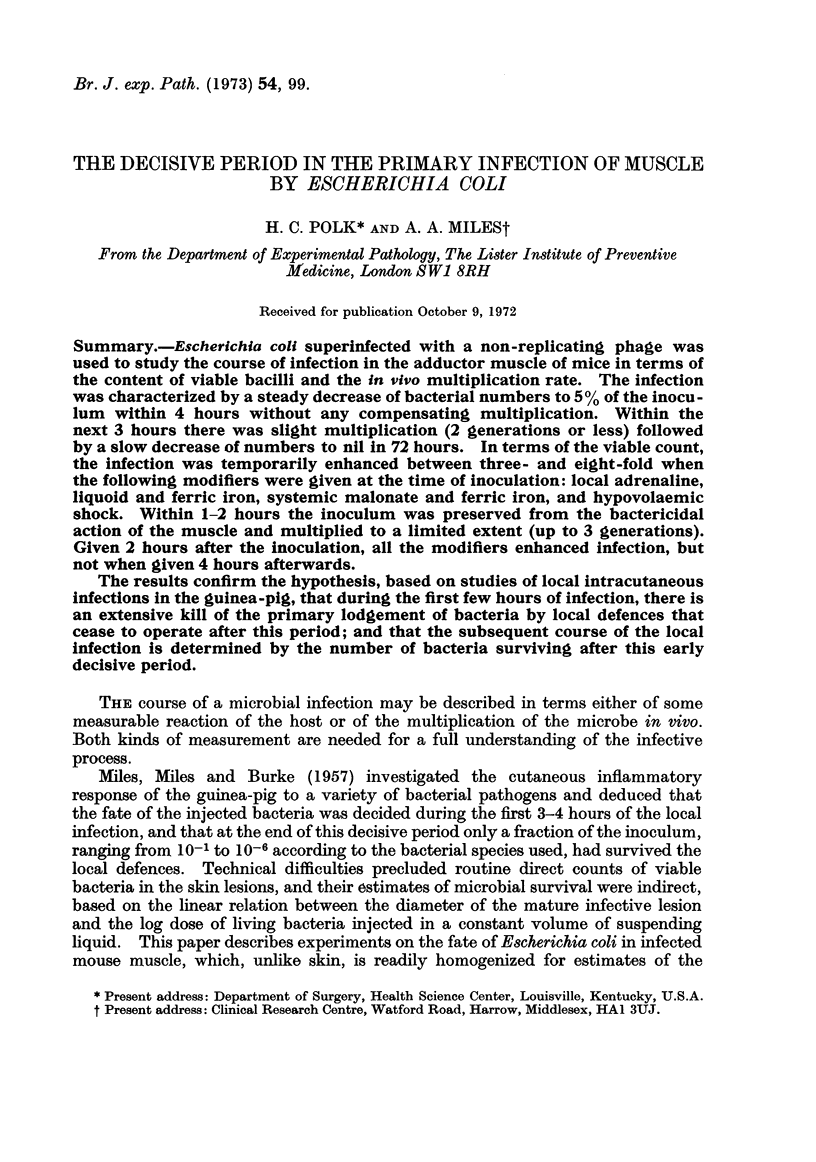
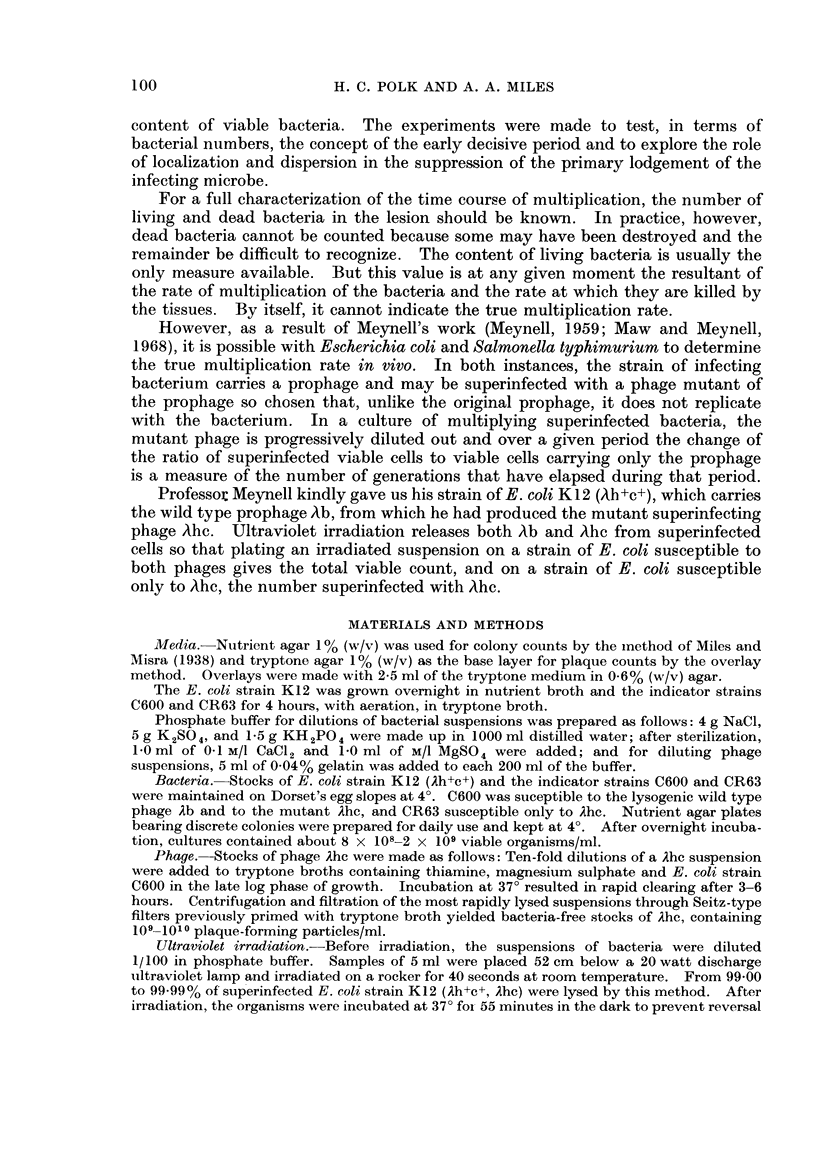
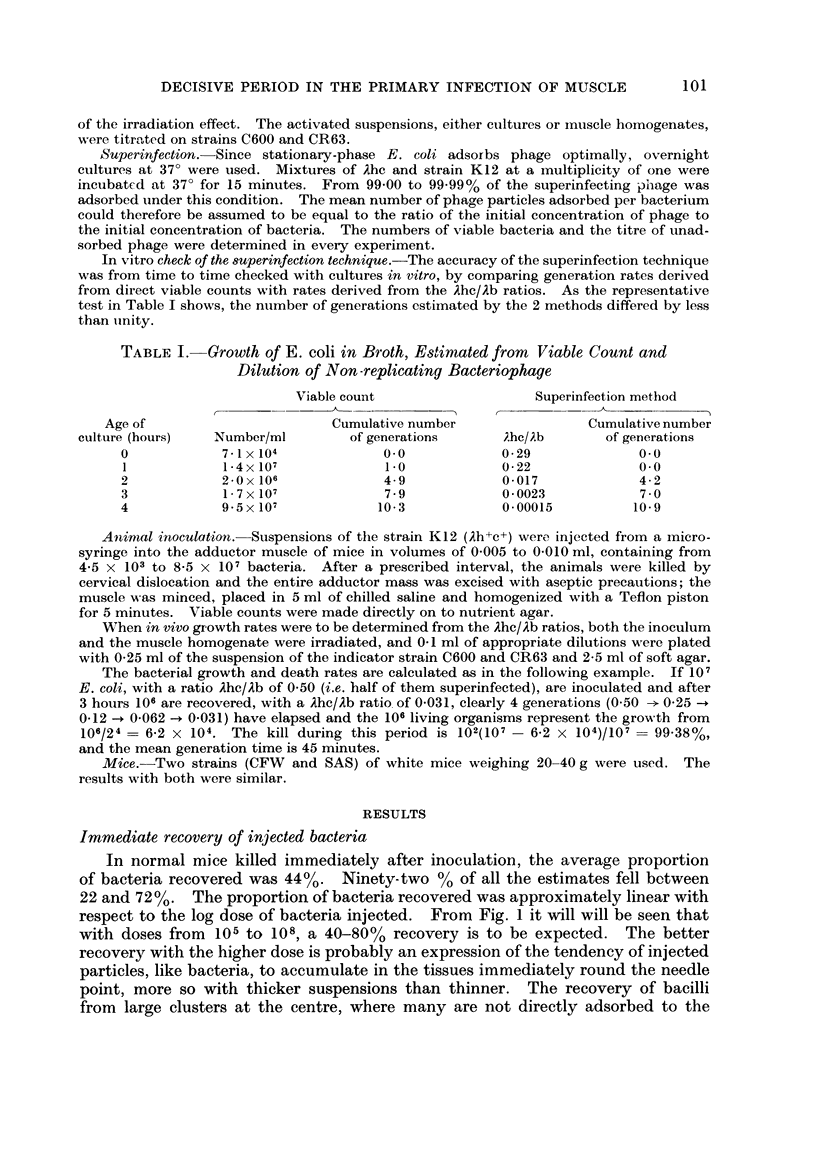
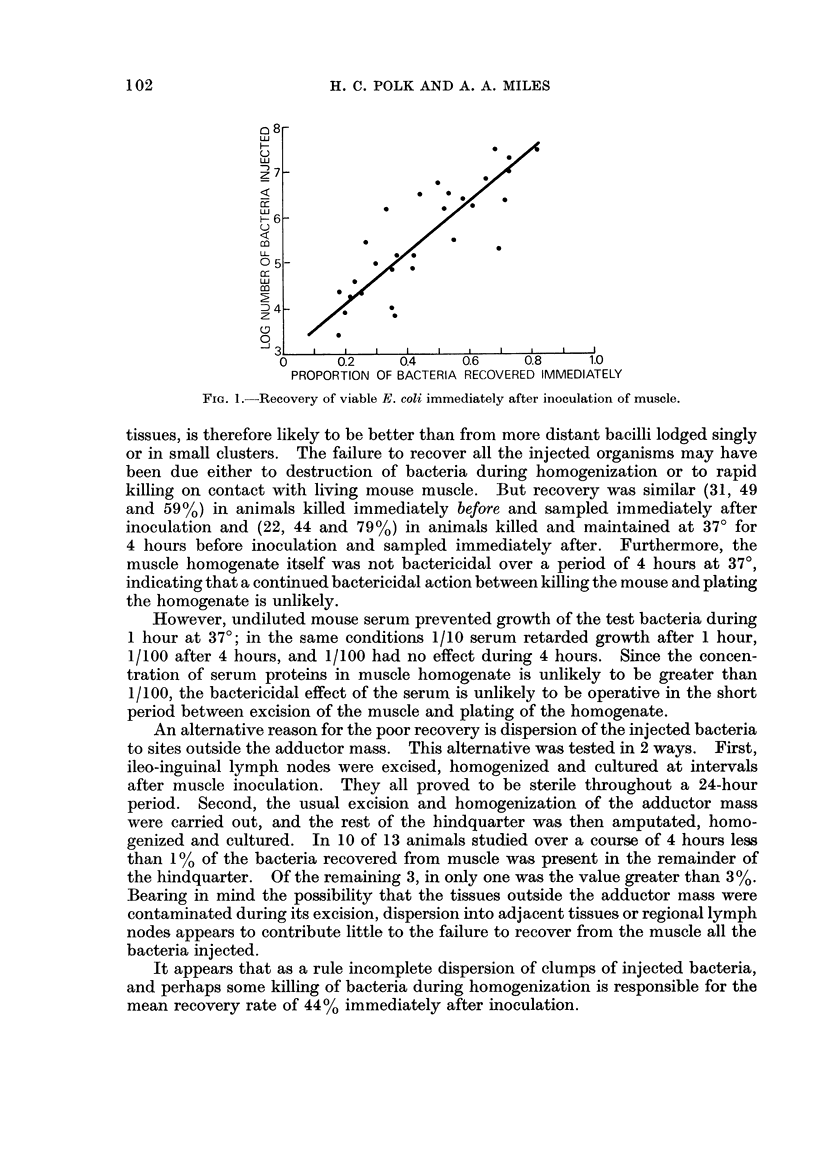
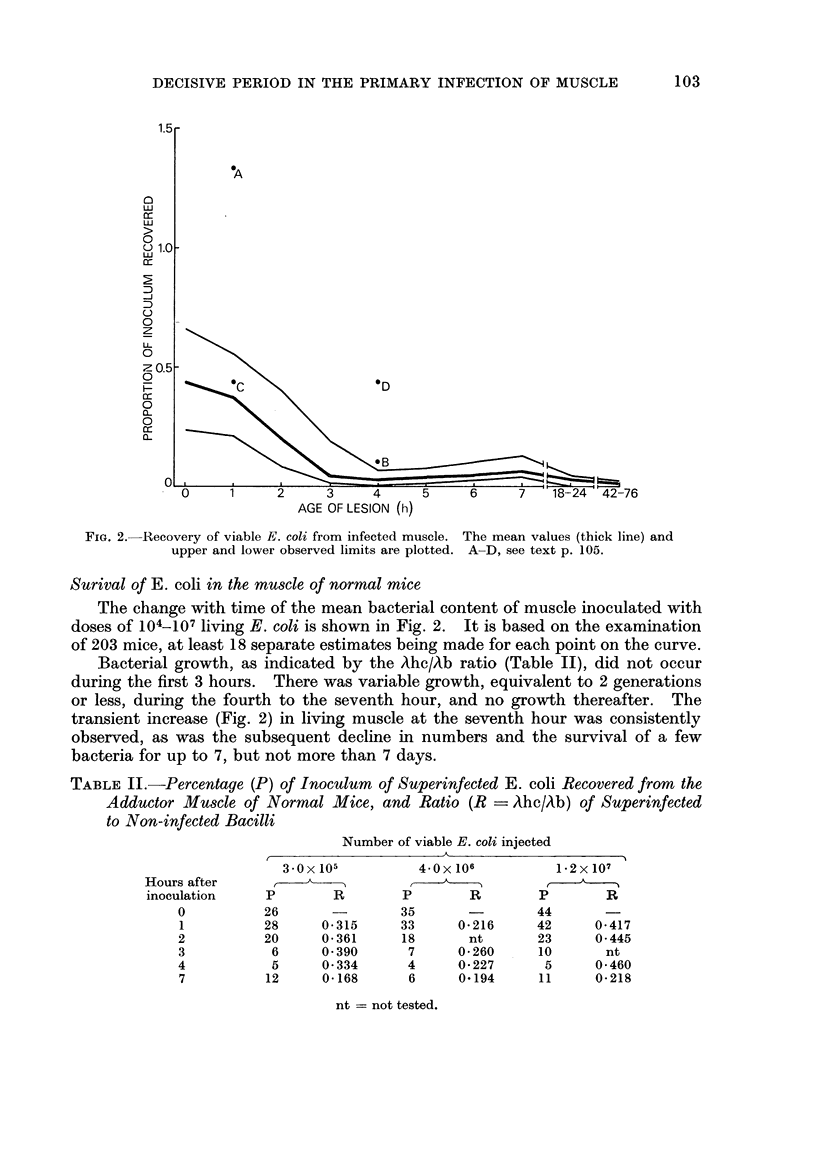
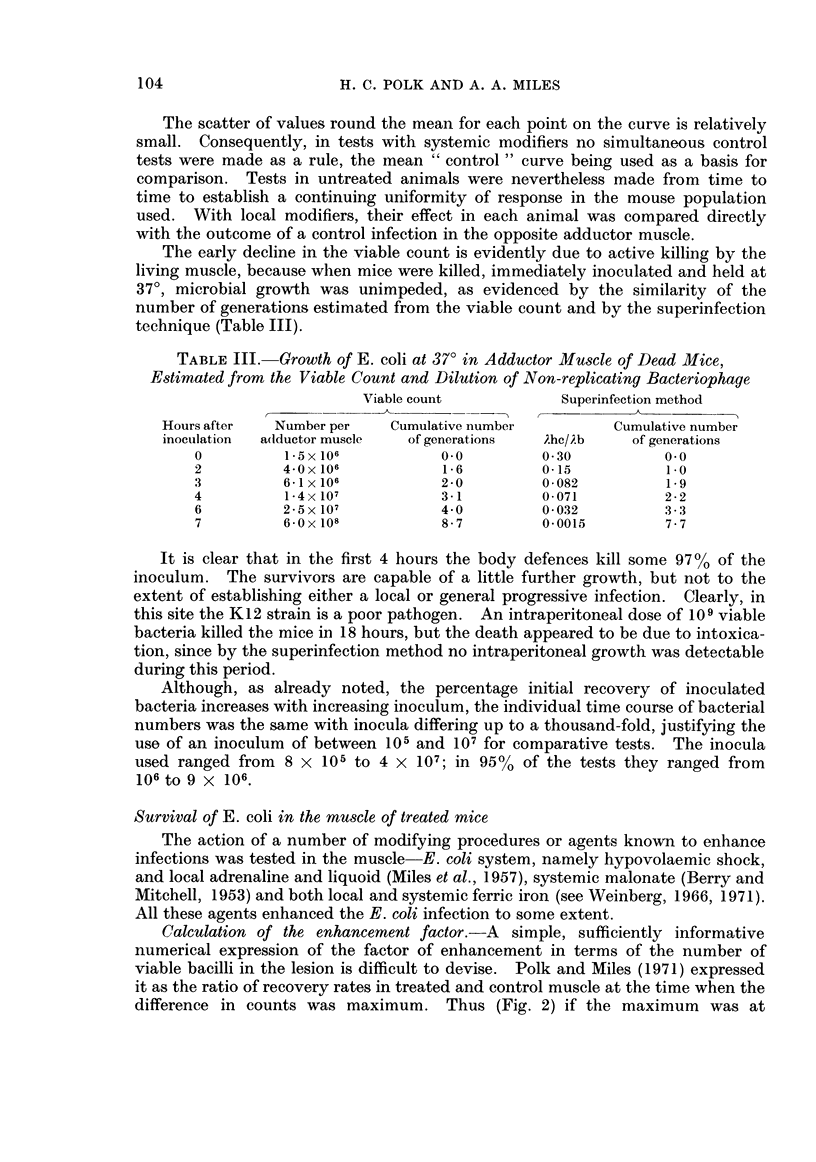
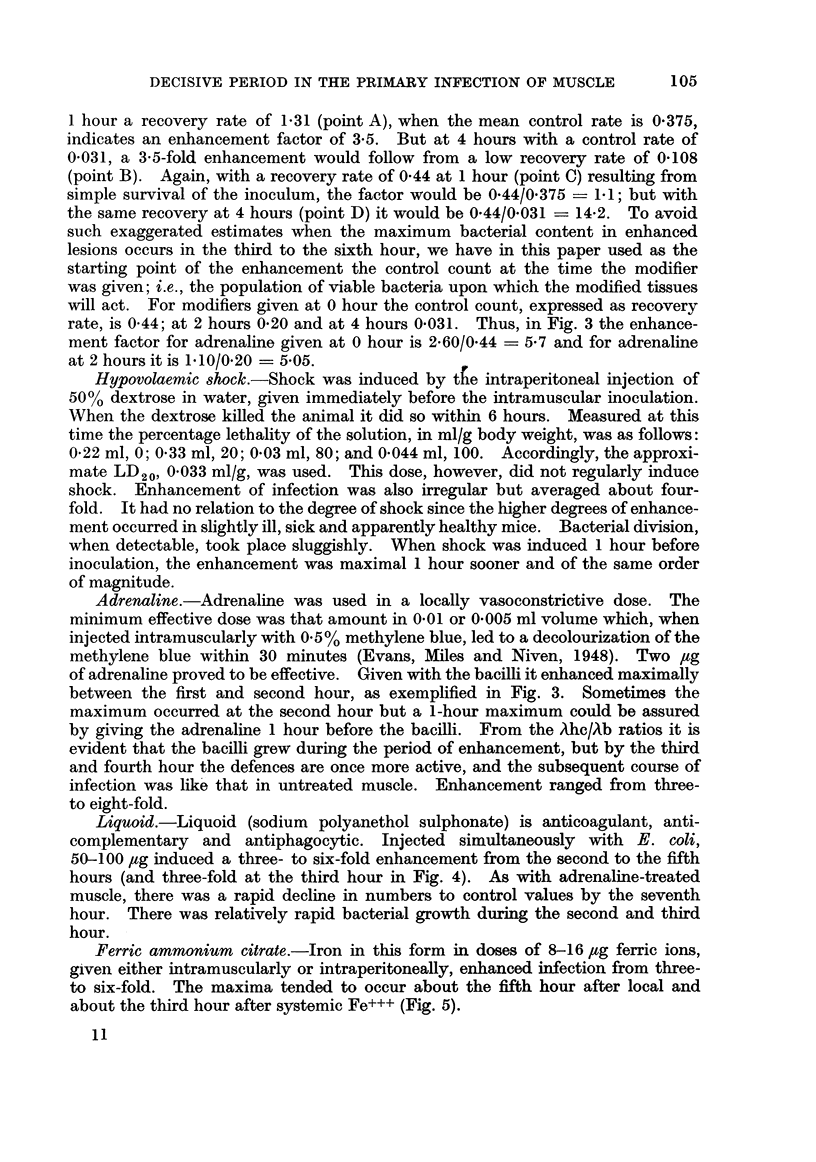
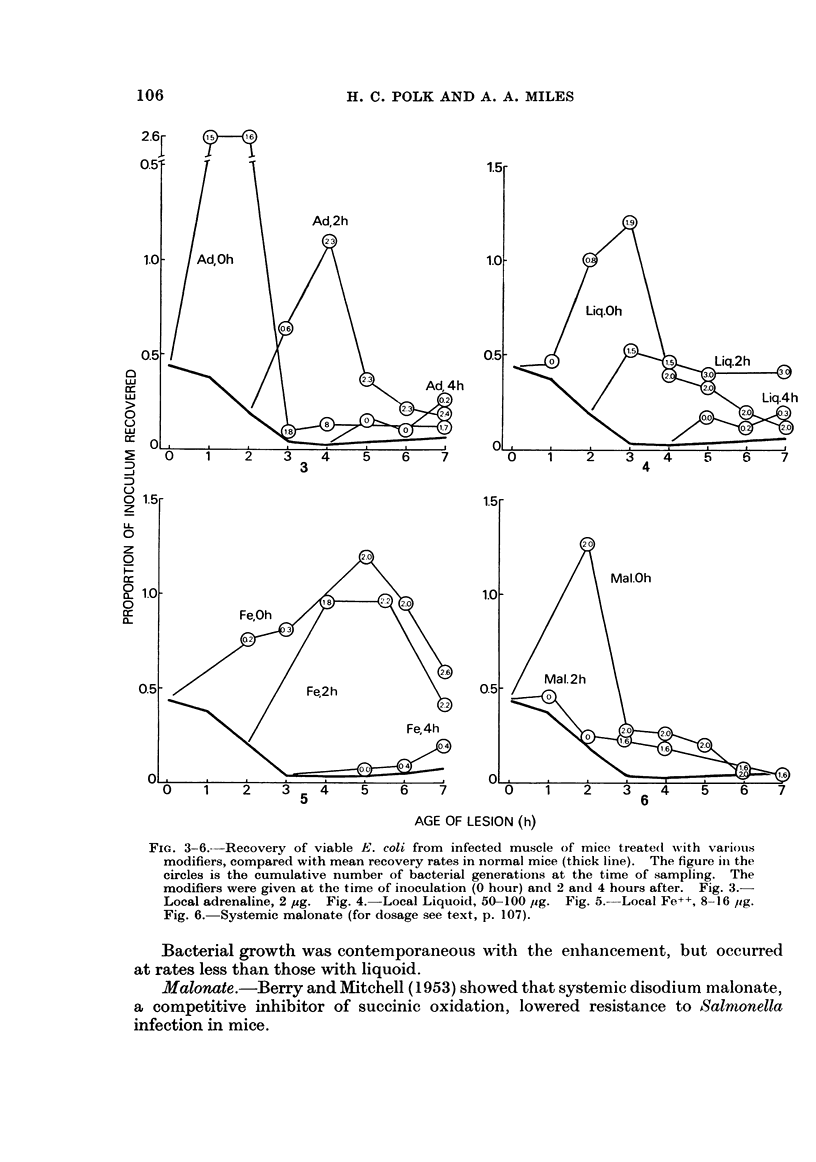
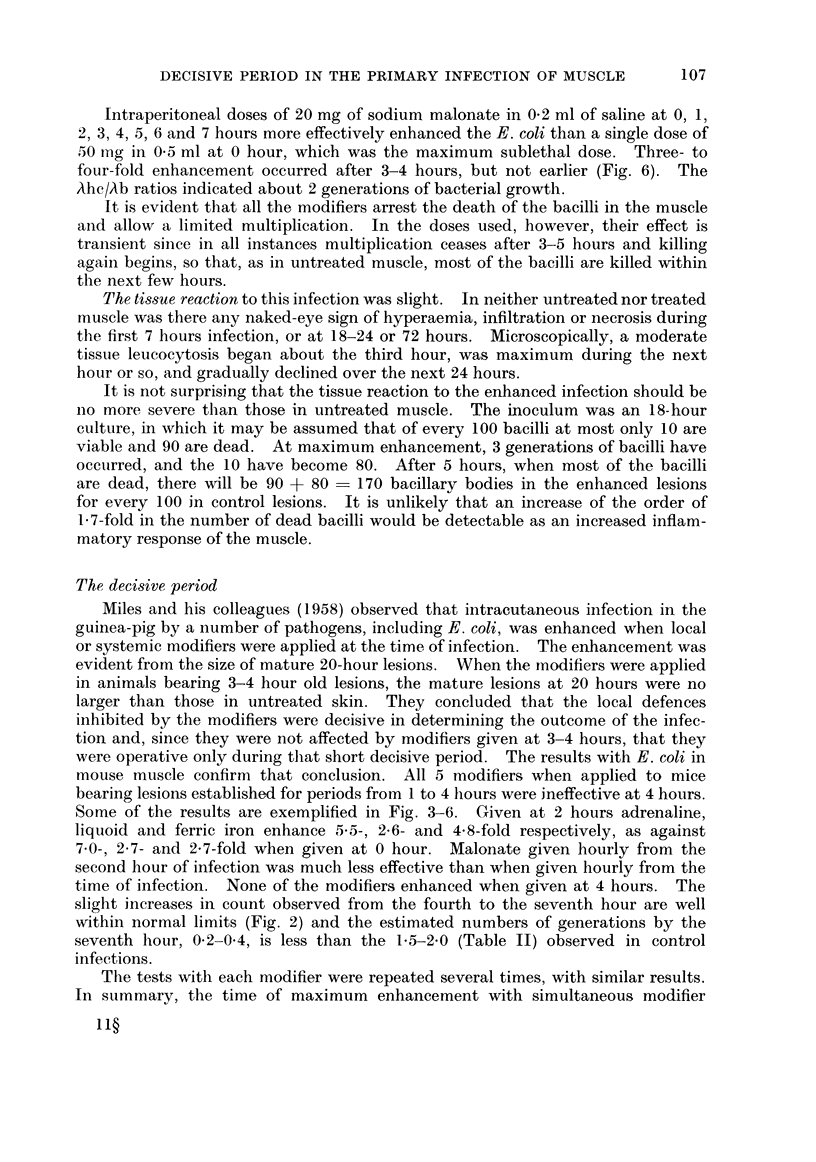
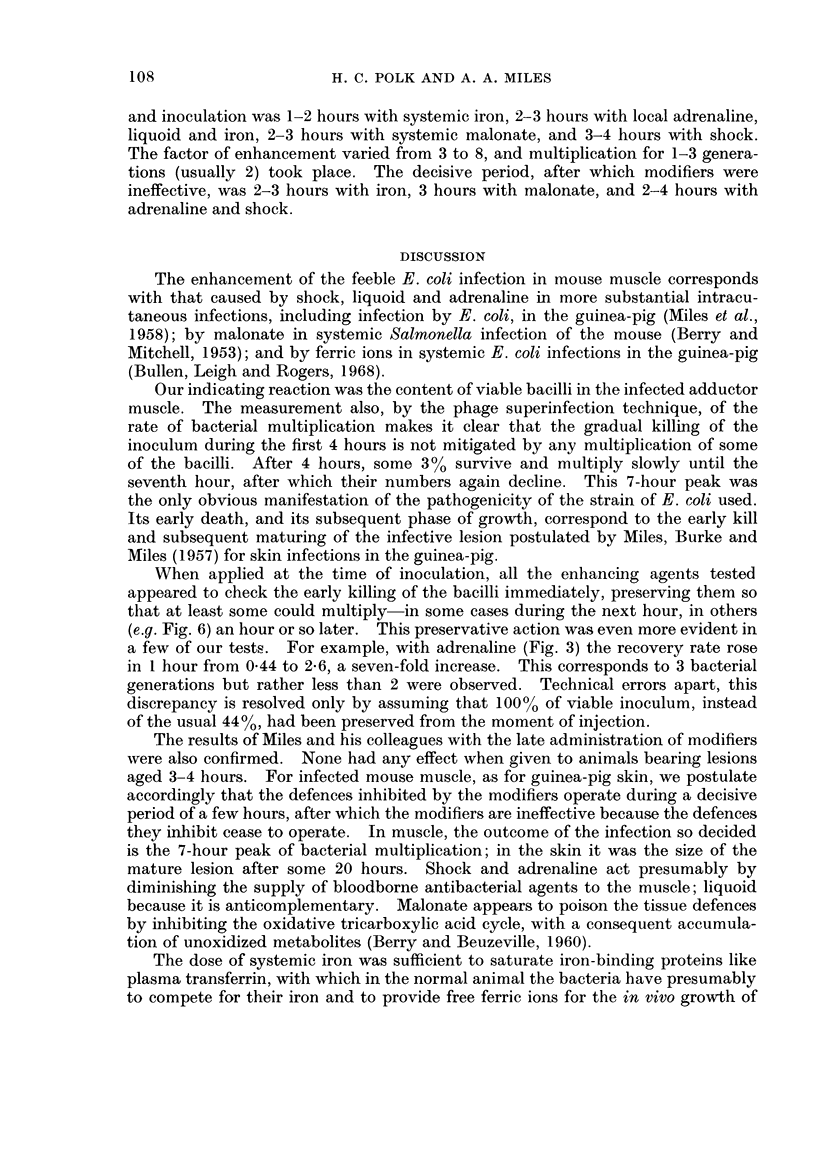
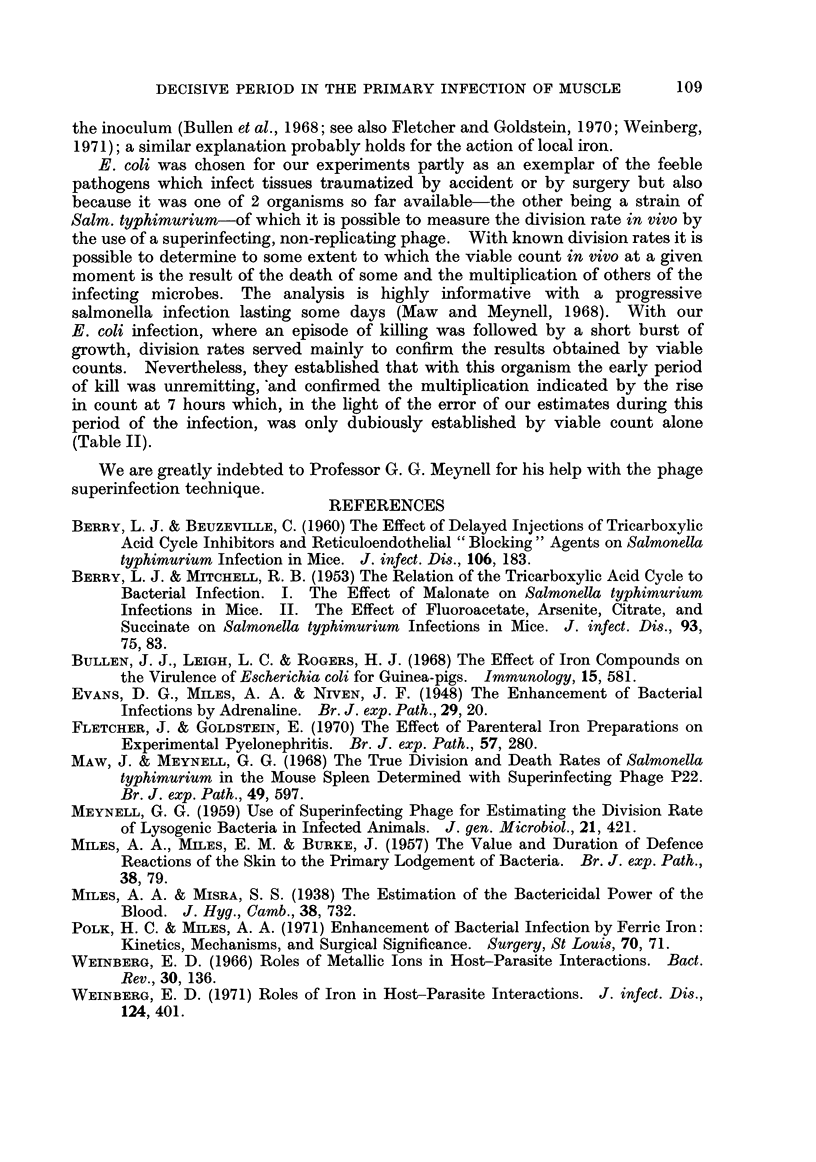
Selected References
These references are in PubMed. This may not be the complete list of references from this article.
- BERRY L. J., BEUZEVILLE C. The effect of delayed injections of tricarboxylic acid cycle inhibitors and reticuloendothelial "blocking" agents on Salmonella typhimurium infection in mice. J Infect Dis. 1960 Mar-Apr;106:183–192. doi: 10.1093/infdis/106.2.183. [DOI] [PubMed] [Google Scholar]
- Bullen J. J., Leigh L. C., Rogers H. J. The effect of iron compounds on the virulence of Escherichia coli for guinea-pigs. Immunology. 1968 Oct;15(4):581–588. [PMC free article] [PubMed] [Google Scholar]
- Fletcher J., Goldstein E. The effect of parenteral iron preparations on experimental pyelonephritis. Br J Exp Pathol. 1970 Jun;51(3):280–285. [PMC free article] [PubMed] [Google Scholar]
- MILES A. A., MILES E. M., BURKE J. The value and duration of defence reactions of the skin to the primary lodgement of bacteria. Br J Exp Pathol. 1957 Feb;38(1):79–96. [PMC free article] [PubMed] [Google Scholar]
- Maw J., Meynell G. G. The true division and death rates of Salmonella typhimurium in the mouse spleen determined with superinfecting phage P22. Br J Exp Pathol. 1968 Dec;49(6):597–613. [PMC free article] [PubMed] [Google Scholar]
- Weinberg E. D. Role of iron in host-parasite interactions. J Infect Dis. 1971 Oct;124(4):401–410. doi: 10.1093/infdis/124.4.401. [DOI] [PubMed] [Google Scholar]


